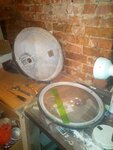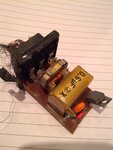jonnyspeed
Newbie level 4
Hi, I recently took apart a 25 yr old 400 watt spotlight and found this old ballast in there. looks pretty ancient i must say. I am going to restore it to its previous state and either build or buy another ballast for it. Any schematics out there or tutorials on this sort of thing?
:smile:
Im using an ipad 2 and it doesnt let me add photos :sad:
:smile:
Im using an ipad 2 and it doesnt let me add photos :sad:
Last edited:

